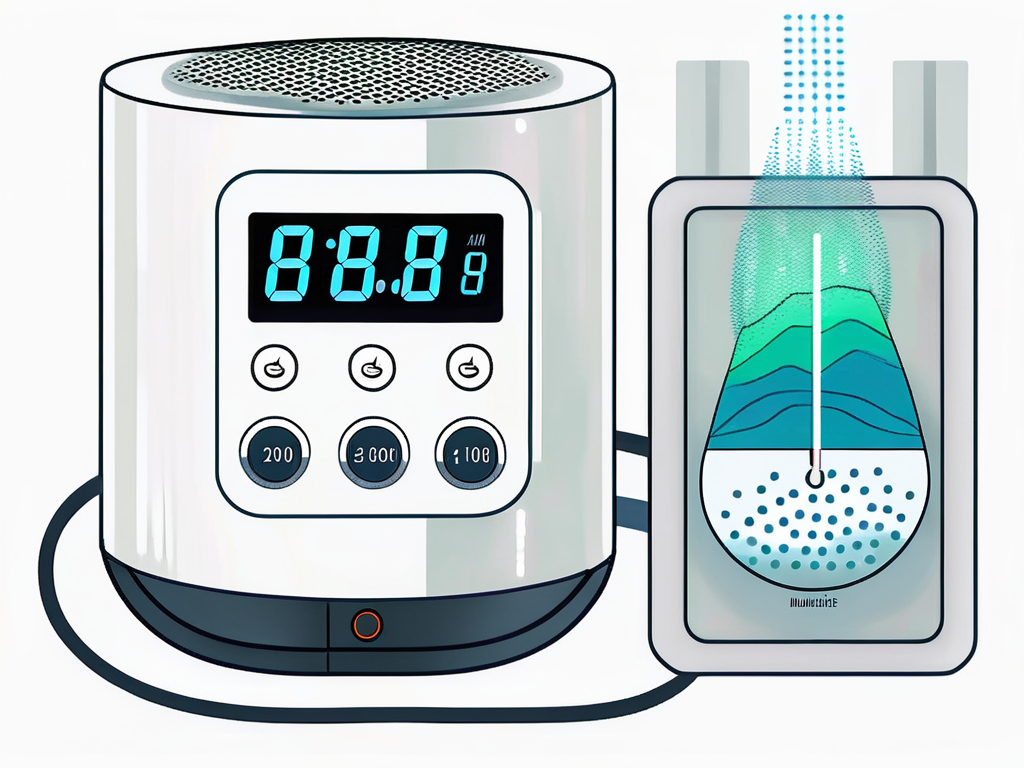A humidistat is a device that measures and controls the humidity level in a given environment. It’s a crucial component in various systems, from residential HVAC units to industrial humidification systems. Understanding the workings of a humidistat can help you maintain optimal humidity levels, ensuring comfort, health, and the longevity of materials and equipment.
Humidity refers to the amount of water vapor present in the air. It’s a key factor in determining the comfort level in a space and can affect various aspects of our lives, from our health to the functionality of our devices. Too much or too little humidity can lead to discomfort, health issues, and damage to materials and equipment. Hence, the need for devices like the humidistat that can measure and control humidity levels.
Understanding Humidistats
A humidistat operates on a simple principle. It measures the relative humidity in the air and then activates a humidifier or dehumidifier to adjust the humidity level to a predetermined set point. The device is usually connected to a heating, ventilation, and air conditioning (HVAC) system and can either be integrated into the system or installed as a standalone device.
Humidistats come in different types and models, each with its unique features and specifications. However, they all share the same basic function – to maintain a comfortable and healthy level of humidity in a space. They do this by either adding moisture to the air when it’s too dry or removing moisture when it’s too humid.
Components of a Humidistat
The primary components of a humidistat include a sensing element and a control circuit. The sensing element, often made of human hair or a synthetic material, expands and contracts based on the humidity level. This change in size triggers the control circuit, which then activates the humidifier or dehumidifier.
Other components may include a display screen that shows the current humidity level and the set point, buttons or dials for adjusting the set point, and indicators that show whether the device is currently adding or removing moisture from the air.
Types of Humidistats
Humidistats can be categorized into two main types: mechanical and electronic. Mechanical humidistats use a physical element, such as human hair, that changes size with the humidity level. This change triggers a mechanical switch that activates the humidifier or dehumidifier.
Electronic humidistats, on the other hand, use electronic sensors to measure the humidity level. These sensors send a signal to a microprocessor, which then controls the humidifier or dehumidifier. Electronic humidistats are generally more accurate and reliable than mechanical ones, but they can also be more expensive.
How Humidistats Work
The operation of a humidistat can be broken down into three main steps: sensing, comparing, and controlling. In the sensing step, the humidistat measures the current humidity level in the air. This is usually done by a sensing element that changes size with the humidity level.
In the comparing step, the humidistat compares the current humidity level with the set point. If the current level is higher than the set point, the humidistat will activate the dehumidifier. If it’s lower, it will activate the humidifier.
Sensing Humidity
The sensing element in a humidistat is designed to change size with the humidity level. This change in size is then converted into an electrical signal that can be measured and interpreted by the control circuit. Different materials can be used for the sensing element, including human hair, synthetic materials, and electronic sensors.
Human hair and synthetic materials work on the principle of hygroscopy, which is the ability of a substance to attract and hold water molecules from the surrounding environment. As the humidity level increases, these materials absorb more water and expand. As it decreases, they release water and contract.
Comparing and Controlling Humidity
Once the humidistat has sensed the current humidity level, it compares this level with the set point. If the current level is higher than the set point, the humidistat will activate the dehumidifier. If it’s lower, it will activate the humidifier.
The control circuit in a humidistat is designed to interpret the signal from the sensing element and control the humidifier or dehumidifier accordingly. This circuit can be a simple mechanical switch in mechanical humidistats or a complex microprocessor in electronic humidistats.
Applications of Humidistats
Humidistats are used in a wide range of applications, from residential to industrial. In homes, they are often integrated into HVAC systems to maintain a comfortable and healthy level of humidity. They can also be found in standalone humidifiers and dehumidifiers.

In industrial settings, humidistats are used to control the humidity level in environments where precise humidity control is crucial. This includes laboratories, manufacturing facilities, and storage areas for certain materials and products.
Residential Applications
In homes, humidistats are used to maintain a comfortable and healthy level of humidity. They can be integrated into HVAC systems or used in standalone humidifiers and dehumidifiers. By controlling the humidity level, humidistats can help prevent issues like dry skin, respiratory problems, and damage to wooden furniture and flooring.
Some advanced humidistats also have features like automatic mode, where the device adjusts the set point based on the outside temperature to prevent condensation on windows, and Wi-Fi connectivity, which allows the device to be controlled remotely through a smartphone app.
Industrial Applications
In industrial settings, humidistats are used to control the humidity level in environments where precise humidity control is crucial. This includes laboratories, where certain experiments and processes require specific humidity levels, and manufacturing facilities, where the humidity level can affect the quality and safety of products.
Humidistats are also used in storage areas for certain materials and products. For example, in a wine cellar, maintaining the right humidity level is crucial to prevent the corks from drying out and the wine from oxidizing. In a data center, controlling the humidity level can help prevent static electricity, which can damage electronic equipment.
Choosing the Right Humidistat
When choosing a humidistat, there are several factors to consider. These include the type of humidistat, its accuracy and reliability, the range of humidity it can control, its features and specifications, and its price.

The type of humidistat is one of the first things to consider. Mechanical humidistats are generally cheaper and easier to install, but they can be less accurate and reliable than electronic ones. Electronic humidistats, on the other hand, offer better accuracy and reliability, but they can be more expensive and require a power source.
Accuracy and Reliability
The accuracy and reliability of a humidistat are crucial. An inaccurate humidistat can lead to uncomfortable and unhealthy humidity levels, while an unreliable one can fail to control the humidity level when needed. When choosing a humidistat, look for one that has a high accuracy rating and a good track record of reliability.
Some humidistats also have a calibration feature, which allows you to adjust the device’s readings to match a reference humidity sensor. This can be useful for ensuring the accuracy of the humidistat over time.
Features and Specifications
The features and specifications of a humidistat can also be important. Some humidistats have a display screen that shows the current humidity level and the set point, which can be useful for monitoring the humidity level. Others have features like automatic mode, Wi-Fi connectivity, and compatibility with smart home systems.
The range of humidity that a humidistat can control is another important specification. Some humidistats can control a wide range of humidity levels, from very dry to very humid, while others are limited to a narrower range. Choose a humidistat that can control the range of humidity levels that you expect in your environment.
Maintaining a Humidistat
Like any device, a humidistat requires regular maintenance to ensure its accuracy and reliability. This includes cleaning the sensing element, checking the control circuit, and calibrating the device if necessary.

Cleaning the sensing element is crucial, as dust and dirt can affect its ability to accurately measure the humidity level. This can usually be done with a soft brush or a can of compressed air. Check the control circuit for any signs of damage or wear, and replace any faulty components.
Calibration
Some humidistats have a calibration feature, which allows you to adjust the device’s readings to match a reference humidity sensor. This can be useful for ensuring the accuracy of the humidistat over time. To calibrate a humidistat, you’ll need a reference humidity sensor that has been calibrated to a high standard of accuracy.
Follow the manufacturer’s instructions for calibrating the humidistat. This usually involves adjusting a dial or screw on the device while comparing the humidistat’s readings with the reference sensor. Once the readings match, the humidistat is calibrated.
Replacement
If a humidistat becomes faulty or inaccurate beyond repair, it may need to be replaced. When replacing a humidistat, choose one that is compatible with your humidifier or dehumidifier and has the features and specifications that you need. Follow the manufacturer’s instructions for installing the new humidistat, and calibrate it if necessary.
Remember to dispose of the old humidistat responsibly. Some components, like electronic sensors and batteries, may need to be recycled separately from regular household waste.




